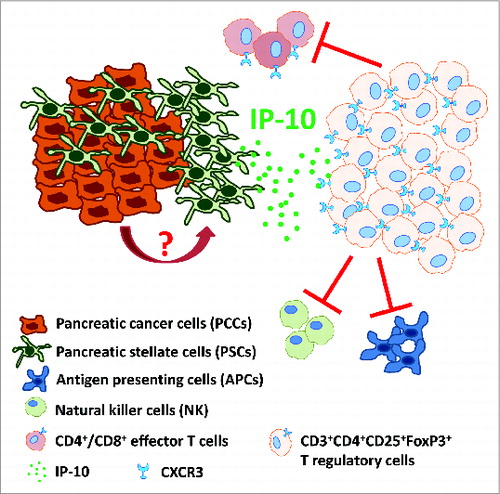Figures & data
Figure 1. IP-10 recruits immunosuppressive CXCR3+FoxP3+ regulatory T cells in pancreatic ductal adenocarcinoma. Pancreatic cancer cells (PCCs) induce pancreatic stellate cells (PSCs) to secrete IP-10 by a yet to be characterized mechanism. IP-10 recruits CXCR3 (the cognate receptor)-expressing CD4+/CD8+ effector T cells and FoxP3+ regulatory T cells (Tregs). However, because circulating Treg numbers are highly elevated relative to effector T cells, CXCR3+ Tregs may be preferentially recruited to inhibit adaptive immune responses (via effector T cell, NK cell and APC inhibition), thus contributing to an immunosuppressive and tumor-promoting microenvironment.

